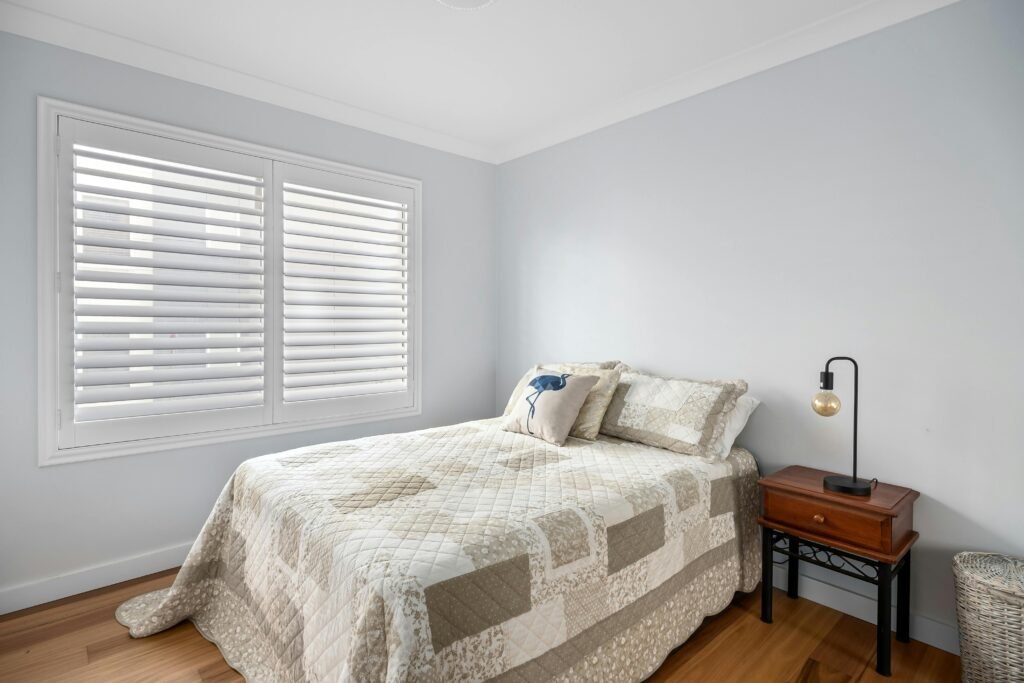In the search for long-lasting comfort, finding the perfect material is key. With so many options available, it can be overwhelming to make a decision. However, by selecting the right material that offers both comfort and durability, you can ensure that your investment will stand the test of time. This article explores the factors to consider when choosing the perfect material for long-lasting comfort and provides valuable insights to help you make an informed decision. Whether you’re shopping for a new mattress, sofa, or clothing, this guide will steer you in the right direction to find the ultimate level of comfort that will keep you cozy for years to come.

This image is property of images.pexels.com.
Understanding Comfort and Durability
When it comes to selecting materials for various products, comfort and durability are two key factors that should not be overlooked. Comfort refers to the level of physical ease and satisfaction that a material provides, while durability refers to its ability to withstand wear and tear over time. Understanding these concepts is essential for making informed decisions about material selection.
What is comfort?
Comfort can be subjective and vary from person to person, but generally, it refers to the feeling of physical ease and satisfaction that a material provides. Comfortable materials can make a significant difference in various aspects of our lives, from clothing and bedding to furniture and footwear. When a material is comfortable, it contributes to a positive overall experience, making us feel at ease and content.
What is durability?
Durability, on the other hand, is the material’s ability to withstand wear and tear over a prolonged period. It measures the material’s strength and resilience, ensuring that it can endure repetitive use, such as frequent washing, stretching, or friction. Durable materials are essential because they ensure that the products made from them last longer, saving us money in the long run and reducing environmental waste.
Why are they important in material selection?
Comfort and durability are crucial in material selection because they directly impact our satisfaction and the product’s longevity. Choosing materials that prioritize comfort ensures that we enjoy using the product and feel physically at ease. Meanwhile, opting for durable materials guarantees that the product can withstand daily use without quickly deteriorating. Together, comfort and durability contribute to a higher quality of life and a more sustainable approach to consumption.
Factors to Consider When Choosing Material
When faced with various material options, it’s essential to evaluate several factors to help guide your selection. These factors can significantly influence comfort and durability, ensuring that you make an informed decision.
Softness and smoothness
One of the most tangible aspects of comfort is the softness and smoothness of a material. When materials are soft and smooth, they feel gentle against the skin, enhancing the overall comfort level. Evaluating the texture of a material is crucial, especially for applications like clothing, bedding, and upholstery, where direct contact with the skin occurs.
Breathability and moisture-wicking abilities
Breathability and moisture-wicking abilities are essential, particularly for materials used in clothing and sleepwear. Breathability ensures proper air circulation, preventing overheating and excessive perspiration. Moisture-wicking abilities assist in drawing moisture away from the body, keeping us dry and comfortable. These factors are particularly beneficial in warm climates or during physical activities.
Temperature regulation
Depending on the intended use, materials that offer temperature regulation can greatly enhance comfort. For example, in bedding, materials that help regulate body temperature can ensure a comfortable night’s sleep. Fabrics with thermal properties can also be suitable for activewear, helping to maintain an appropriate body temperature during exercise.
Allergy and sensitivity considerations
Considering allergies and sensitivities is crucial when selecting materials, especially for individuals with specific sensitivities or predispositions to allergies. Some materials, such as wool or certain synthetic fibers, can cause skin irritations or allergic reactions in certain individuals. Opting for hypoallergenic materials or those with low irritant properties can help minimize discomfort.
Durability and resistance to wear and tear
Durability is an essential aspect to consider when selecting materials, especially for products that will undergo frequent use or washing. Materials that are resistant to wear and tear, such as sturdy blends or reinforced fabrics, ensure that the product remains in good condition and continues to provide comfort over an extended period.
Ease of cleaning and maintenance
Considering the ease of cleaning and maintenance is particularly important for materials used in items like clothing, bedding, or upholstery. Some materials may require specific care instructions, such as dry cleaning or delicate washing, which can impact convenience and longevity. Opting for materials that are easy to clean and maintain can make a significant difference in the overall durability and comfort of the product.

This image is property of images.pexels.com.
Common Materials for Long-Lasting Comfort
Now that we understand the factors that contribute to both comfort and durability, let’s explore some common materials known for their long-lasting comfort:
Cotton
Cotton is a natural fiber known for its softness, breathability, and absorbency. It is a versatile material used in various applications, from clothing to bedding and upholstery. Cottons can be woven into different textures like jersey, flannel, or twill, offering a wide range of comfort options.
Silk
Silk is a luxurious, smooth, and soft material that is highly prized for its comfort and elegance. It has excellent temperature-regulating properties, making it suitable for various applications, including clothing and bedding. Silk’s natural properties also make it hypoallergenic and gentle on the skin.
Wool
Wool is a natural fiber renowned for its warmth, softness, and insulating properties. It is commonly used in clothing, bedding, and upholstery, providing excellent comfort and durability. Wool is naturally moisture-wicking, keeping the body dry and comfortable even in damp conditions.
Linen
Linen is a lightweight and breathable material derived from the flax plant. It offers excellent breathability and moisture-wicking properties, making it ideal for warm climates or those prone to night sweats. Linen also becomes softer with each wash, ensuring long-lasting comfort.
Polyester
Polyester is a synthetic fiber known for its durability and resistance to wrinkles and shrinkage. While it may not be as natural or breathable as other materials, polyester is widely used in various applications such as activewear, outdoor gear, and upholstery due to its excellent strength and resilience.
Microfiber
Microfiber is a lightweight synthetic material known for its softness, breathability, and moisture-wicking abilities. Its ultra-fine fibers make it exceptionally smooth and comfortable to the touch. Microfiber is often used in bedding, clothing, and upholstery, providing an excellent balance of comfort and durability.
Bamboo
Bamboo is a sustainable and eco-friendly material that offers a unique combination of softness, breathability, and moisture-wicking abilities. It provides excellent comfort and is often used in clothing, bedding, and towels. Bamboo is also naturally hypoallergenic, making it suitable for those with sensitive skin or allergies.
Rayon
Rayon, or viscose, is a semi-synthetic material made from regenerated cellulose fibers. It has a smooth and silky texture and offers breathability and moisture-absorbing properties. Rayon can be used in a wide range of applications, including clothing, bedding, and upholstery.
Nylon
Nylon is a synthetic fiber known for its strength, durability, and ability to retain shape. It is widely used in activewear, hosiery, and outdoor gear due to its excellent stretch and recovery properties. While it may not be as breathable as natural fibers, nylon provides long-lasting comfort and resilience.
Spandex
Spandex, also known as elastane or Lycra, is a synthetic fiber renowned for its exceptional stretch and recovery abilities. It is often blended with other materials to provide comfort, flexibility, and a snug fit. Spandex is commonly used in sportswear, swimwear, and undergarments, offering excellent support and freedom of movement.
Comparing Materials for Comfort and Durability
Now that we have explored some common materials known for their comfort and durability, let’s compare a few of them side by side:
Cotton vs. Polyester
Cotton is a natural fiber known for its softness and breathability, making it ideal for applications like clothing and bedding. Polyester, on the other hand, is a synthetic fiber known for its durability and resistance to wrinkles and shrinkage. Both materials have their advantages, and the choice depends on personal preferences and specific needs.
Silk vs. Linen
Silk is a luxurious natural fiber known for its smoothness and temperature-regulating properties. Linen, on the other hand, is a breathable material that becomes softer with each wash. While silk offers a more elegant and refined feel, linen is more suitable for warm climates or individuals prone to night sweats.
Wool vs. Microfiber
Wool is a natural fiber known for its warmth, softness, and insulating properties. It provides excellent comfort during colder seasons. Microfiber, on the other hand, is a synthetic material known for its softness and breathability. It offers a lightweight comfort option and is often used in bedding and clothing.
Bamboo vs. Rayon
Bamboo is a sustainable and eco-friendly material known for its softness, breathability, and moisture-wicking abilities. Rayon, derived from bamboo or wood pulp, also offers similar qualities. Both materials are suitable for various applications and provide excellent comfort and durability.
Nylon vs. Spandex
Nylon is a synthetic fiber known for its strength, durability, and ability to retain shape. It is commonly used in sportswear, hosiery, and outdoor gear. Spandex, on the other hand, is a synthetic fiber renowned for its exceptional stretch and recovery abilities, providing excellent support and flexibility. Both materials have unique advantages depending on the intended use.

This image is property of images.pexels.com.
Specific Applications and Material Selection
Different materials are suitable for specific applications, depending on their unique properties and characteristics. Let’s explore how comfort and durability play a role in selecting materials for various products:
Bedding and sleepwear
When it comes to bedding and sleepwear, comfort and durability are of utmost importance. Materials like cotton, silk, and bamboo offer excellent breathability, softness, and temperature regulation, contributing to a comfortable sleep environment. Wool and microfiber provide warmth and insulation for colder nights.
Clothing and activewear
Comfortable clothing is essential for our everyday lives, and materials that prioritize comfort and durability are key. Cotton, bamboo, and linen offer breathability and softness, making them suitable for everyday clothing. In activewear, materials like polyester, nylon, and spandex provide flexibility, stretchability, and moisture-wicking abilities.
Furniture and upholstery
The materials used in furniture and upholstery should be both comfortable and resilient. Fabrics like cotton and microfiber offer a soft and comfortable feel, while polyester and nylon provide excellent durability and resistance to wear and tear.
Footwear and socks
Comfortable footwear is essential for supporting our feet and providing cushioning. Materials like leather, cotton, and wool offer breathability and comfort. In socks, a blend of materials like cotton, spandex, and nylon provides a cushioned, snug fit, and moisture-wicking abilities.
Practical Tips for Choosing Comfortable and Durable Materials
Considering the multitude of options available, here are some practical tips to help you choose materials that prioritize comfort and durability:
Consider the intended use
Before selecting a material, consider the specific purpose and requirements of the product. Certain materials may excel in one application but not in others. By understanding the intended use, you can make a more informed decision on which material will provide the best comfort and durability.
Evaluate personal preferences and sensitivities
Everyone has unique preferences and sensitivities when it comes to comfort. Some individuals may prefer softer materials, while others may prioritize breathability. It’s essential to evaluate your personal preferences and consider any sensitivities or allergies you may have to guide your material selection.
Read product labels and descriptions
When shopping for products, read the labels and descriptions carefully. Manufacturers often provide information about the materials used and their properties. Look for keywords such as “breathable,” “moisture-wicking,” or “durable” to help narrow down your choices.
Seek recommendations and reviews
When in doubt, seek recommendations from friends, family, or online communities. Hearing about others’ experiences with specific materials can provide valuable insights and help you make an informed decision. Additionally, reading product reviews can give you a better understanding of how a material performs in real-life applications.
Test samples and swatches
Whenever possible, try to get your hands on samples or swatches of the materials you are considering. Feeling the texture, evaluating the softness, and observing the quality can make a significant difference in your material selection process. Testing samples allows you to gauge the comfort and durability firsthand.
In conclusion, understanding comfort and durability is essential in selecting the right materials for various applications. By considering factors like softness, breathability, temperature regulation, allergies, and maintenance, you can choose materials that prioritize comfort and longevity. From cotton to silk, wool to microfiber, and nylon to spandex, there are various options available to cater to different needs. By assessing the specific application and evaluating personal preferences, you can find materials that provide long-lasting comfort and enhance your overall well-being.
